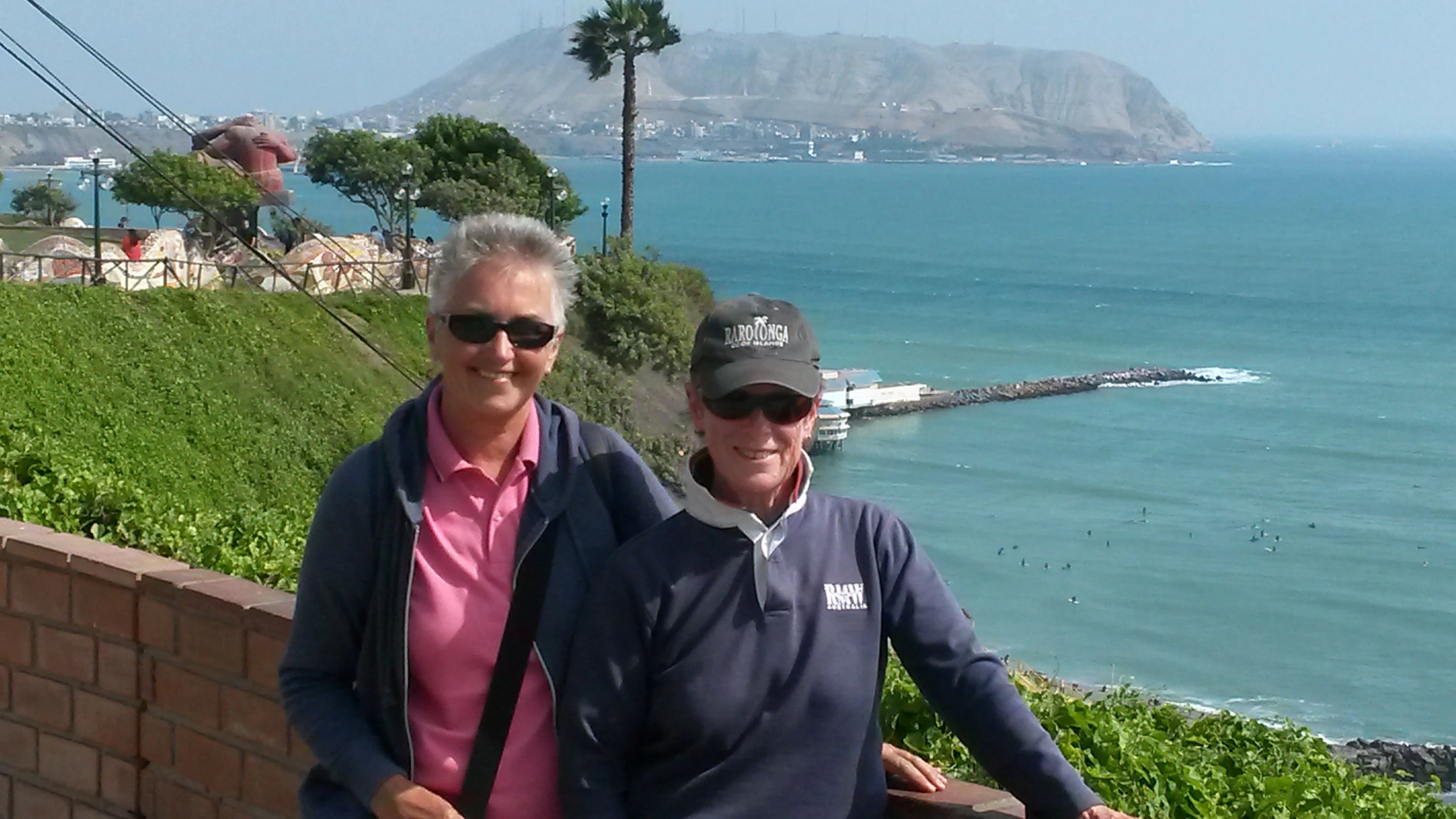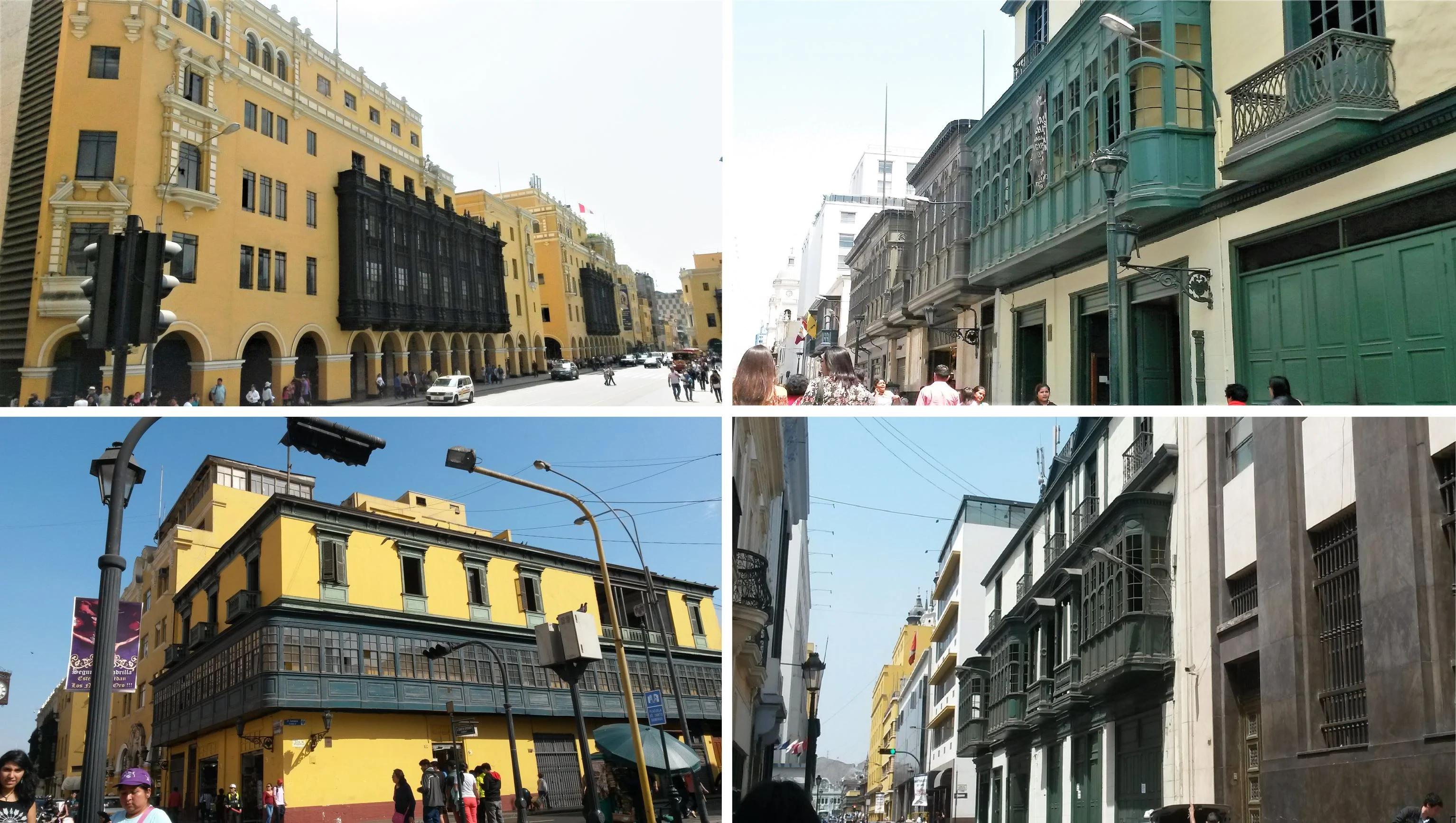Lima, the capital of Peru. Once known as the City of Kings, it was the principal city in Spain’s South American empire for around 300 years. These days, it is a metropolis of 9 million people that has at its heart, a world heritage centre reflecting a strong archaeological and cultural history. We'd been looking forward to visiting this historic city.
 |
| Historic Palacio de la Union building in Lima (UNESCO), Peru |
We flew into Lima close to midnight, with the late hour due to an airport evacuation in Arequipa where we'd spent the last four days. Luckily we had arranged an airport pickup through our Lima Airbnb host. The pickup driver had been waiting for us for
ages, even though we had texted to say that the plane was delayed. But he was
great, and delivered us safely to our Airbnb apartment.
 |
| Interesting and vibrant Miraflores, Lima (UNESCO), Peru |
The two-bedroom apartment proved to be a great place to stay, as it was in Lima’s lovely area of Miraflores. It was
very modern and clean, with room to spread out, and it was an easy walk to
Miraflores shops and restaurants.
Miraflores is a neighbourhood on the southern side of Lima. Back in the 16th century, it was known as a place of flowers, hence its name: Miraflores, or “look at the flowers”. These days, it’s an upmarket and vibrant area with plenty to do and see. We wasted no time in heading out to explore.
 |
| View from the Pacific coast boardwalk in Miraflores, Lima (UNESCO), Peru |
As it is right on the Pacific coast, we headed there first. There is a long boardwalk called the Malecon right
along the clifftop overlooking the ocean, and we walked along it, finding it dotted with sculptures, parks, and interesting views.
A favourite sculpture was in the Parque
del Amor where there is a huge and wonderful sculpture called “The Kiss”
created in 1993. We also enjoyed the shopping centre at Larcomar, it has the best views while shopping.
.jpg) |
| The Marina Lighthouse and hang-gliding off the cliffs of Miraflores, Lima, Peru |
A highlight for us was the active La Marina Lighthouse. It dates back to 1900 when it was built in the far south of Peru, before being re-located to Lima in 1973. It rises over 22 metres into the sky, keeping a watchful eye on the Pacific waters off Lima.
Nearby, we saw a lot of hang-gliders taking off from the very windy cliff top. We didn't have a go!
Right along the Malecon, there were many people walking and cycling in all directions. It was very vibrant and the sea views from the top were fantastic.
Back in Miraflores central, we enjoyed several walks into the vibrant café and restaurant area. Each time, we wandered through Kennedy Park which is the home of very many stray but cute, cats.
The cats were introduced to the park to help manage a rodent problem. Now days, the rodents seem to be under control, because the cats rule here. They are taken care of and loved by locals, and have now become a tourist attraction.
a.jpg) |
| The Huaca Pucllana pyramid ruins, Miraflores, Lima, Peru |
Another tourist attraction in Miraflores is the centuries old Huaca Pucllana ruins. Built between 200 AD and 700 AD of adobe and clay bricks, the site included a pyramid, and once served as a ceremonial and administrative centre for the Lima culture, a pre-Incan civilisation.
After a wander around Huaca Pucllana, we popped into the Municipal Market to pick up some fresh fruit and vegetables, before heading back to Miraflores, and one of its many restaurants for dinner.
a.jpg) |
| The Plaza Mayor, Lima (UNESCO), Peru |
Lima’s historic centre is a UNESCO World Heritage Site. Founded in 1535, it was the centre of old city in the days when the Lima was the most important Spanish city in South America. It is full of stately colonial and Spanish-Moorish style buildings that attest to the city’s wealth at that time.
a.jpg) |
| Lima Cathedral (R), Archbishop's Palace, Plaza Mayor, Lima (UNESCO), Peru |
The Plaza is surrounded by architecturally impressive buildings that include the Renaissance Lima Cathedral, the Neo-Colonial/Baroque Archbishop’s Palace, the Neo-Baroque Government Palace, and the Spanish Colonial Municipal Palace.
Other beautiful buildings in the centre were the colonial style Palacio de Torre Tagle; the Estacion de Desamparados which is now the House of Peruvian Literature and has a stunningly beautiful Art Nouveau stained-glass ceiling; the pretty Art Nouveau Casa Courret; the huge Beaux-Arts Edificio Rimac; and the Neobaroque Palacio de la Union. There were others, but these were particularly interesting.
 |
| Churches (L-R) Merced, Santo Domingo and San Pedro, (UNESCO), Peru |
Nearby we found several impressive churches. Architecturally speaking, these were an interesting mix, but all very grand. Our favourites were the Baroque style Iglesia de La Merced with its stunning carved entrance, the pink Rococo Basilica of Santo Domingo, the Neoclassical Basilica and Convent of San Pedro, and the Baroque Basilica of San Francisco.
We visited central Lima several times and one of our favourite walks was along the Jirón de la Unión, a pedestrian street that was once one of the most important boulevards in Lima, and full of aristocratic and beautiful homes. These days, it is very commercial, although many of the old gracious facades can still be seen.
 |
| Balconies of Lima (UNESCO), Peru |
One of the interesting sights in Lima is its hanging balconies. We thought they were absolutely charming, decoratively hanging over the sidewalk of the streets. We'd seen many in Cusco recently, but the ones in Lima seem larger and more extravagant.
Since Lima is considered the gastronomic capital of Latin America, we tried the top national dish of Peru - ceviche. Our delicious meal was accompanied by a chicha morada, a non-alcoholic purple coloured drink high in antioxidants. It's made by boiling purple corn with pineapple, cinnamon cloves, and sugar – yummmmm.
On most of our visits into the old centre, there were many families out walking, watching and eating. Alongside the river there were people performing to large crowds, and there was lots of activity, music and laughing. It was all so vibrant.
We really enjoyed Lima, and spent several days sightseeing, just chilling out, catching up on washing, blogging, and walking. It was a good place to take a break and relax in a safe environment with lovely friendly people.
Too soon it was time to re-pack the suitcases and fly to Iquitos on the great Amazon River for more adventures, but that's in the next blog.
This is part of a blog series about our travels through the north-eastern countries of South America. The first blog in this series is called “In and around Santiago”.
a.jpg)
a.jpg)